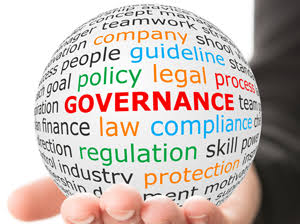Data is the new oil, said a British mathematician while crafting a supermarket reward program in 2006. Little did he know that his little phrase will become the catchphrase of the upcoming decade. In the past ten years, data became more important than it ever was, and the revolution gave rise to the demand for successful data governance strategies. Experts believe that your final results largely depend on the way you manage and use data to convert into information. However, doing so can be a challenging task. Many times, data governance is treated as a service, but we suggest you to start treating it as a product. By doing so, you can optimize your approach and devise new ways to yield the desired results. You can also try shedding the old procedures and policies and develop a new data governance approach strategy, more suited for your enterprise. In this article, we bring you practical tips for data management.
Get an executive sponsor
For a fruitful data governance project, an executive sponsor is a must. Some data experts directly quote the importance of an executive sponsor by saying that the data governance program might not go far if an executive sponsor is not there. The job of executive sponsors is simple but sophisticated. The executive sponsors ensure that your data governance program is visible to your executives and other members of the enterprise. They help in giving a totality to your data governance program, and they surely help you in getting rid of potholes in your path to success. Sicular quoted that without having an efficient executive sponsor, your overall data governance strategy will face regular issues which may undoubtedly affect the final results.
Appoint a Data Specialist and a Data Governance team
Hiring an executive sponsor certainly eases your work, but it doesn’t complete it. An equally important designation is that of a data specialist, or you may also choose to call him your Chief Data Officer. The CDO will assist the executive sponsor and the data governance team in supervising and directing the overall data governance program. Also, your CDO should be able to handle the project as a whole and lead the team to tackle any issues why might come in the way.
Build Your Network
In the field of data governance, you cannot succeed without the support of stakeholders. Stakeholders refer to that experienced personnel who can draw direct or indirect benefits from your data governance project and might also show interest in promoting it among the other organizations. If you don’t build secure networks from the beginning, then you might see your authority challenged, and your position questioned in the future. Field experts believe that these relationship-building programs should be part of the regular company culture.
Be crystal clear about your vision and strategy.
Vision and strategy sound like two very theoretical concepts but believe us, they serve as a doctrine of your data governance program, and they don’t let you deviate from your goal. If you are wondering that how to do that, then all you need to do that is to look at the purpose of your data governance program and think why you are doing this and what your ultimate ambition is. Once you have figured that out, it becomes easy to figure out your vision and devise an apt strategy.
Set your priorities right
Once you have figured out the features of your data governance program, it’s equally important to set them in the right order. The process of putting them in the correct order is termed as setting the priorities. Let’s understand it in a more straightforward manner. Suppose your data governance program brings out some outputs which are helpful to different stakeholders, but all of them are not going to use it at the same time. Therefore, you need to find the ones who are going to be put in use immediately and put them on the top of the list.
Begin small but think big
It’s okay to have large aspirations, but you have to be careful during the beginning of the procedure. The initial scale should be small as that will help you in understanding the business better and get used to the process. Once you have figured out the basics, then you can accelerate your pace and move ahead to build a large scale data governance strategy.
Keep a close watch
No program succeeds without close supervision, and the same applies to data governance operations. Please remember that close supervision is very different from micro data management, and the latter can prove to be disastrous for your business. You can set a worker’s itinerary and can even maintain a log register to keep track of the progress. Lastly, you need to understand that successful data governance is a lengthy process, and you need to maintain your calm throughout the journey.

